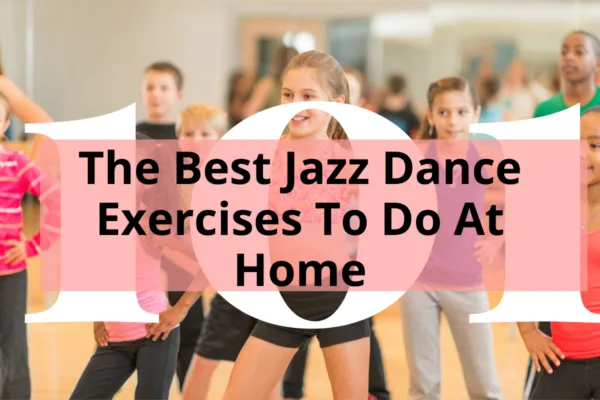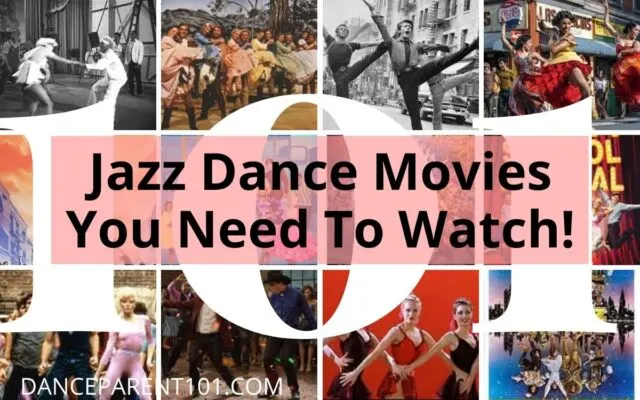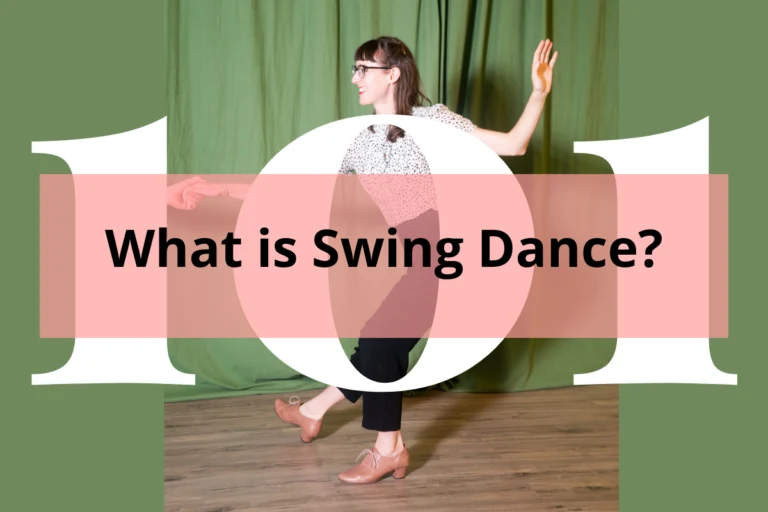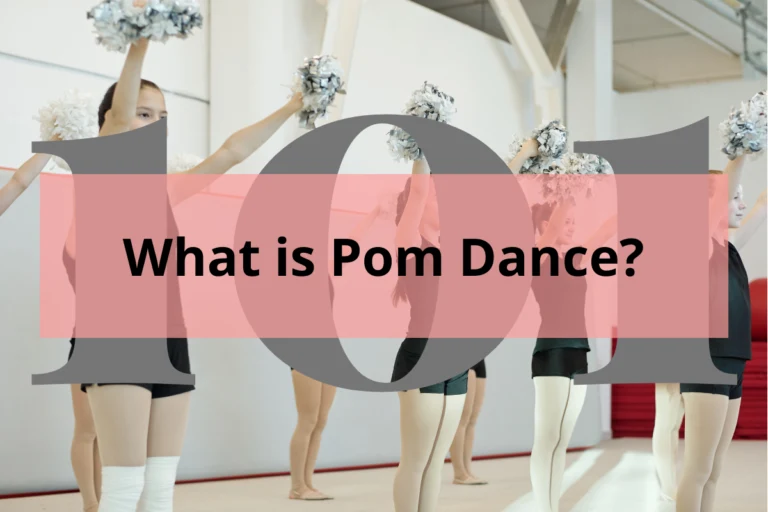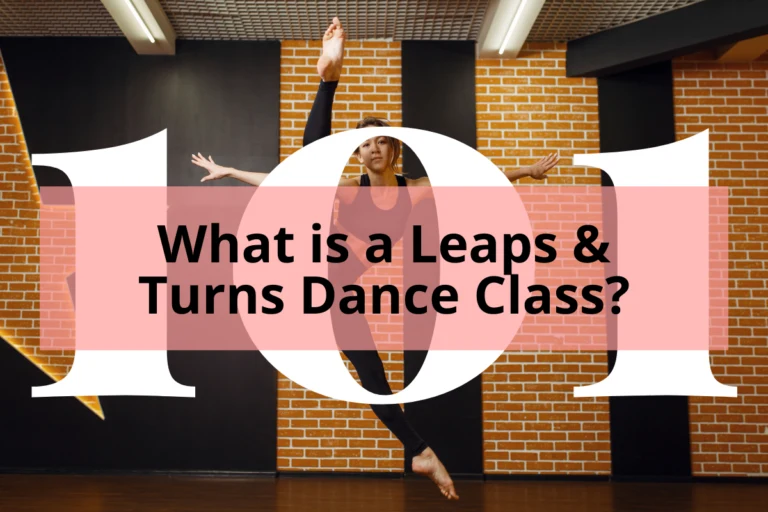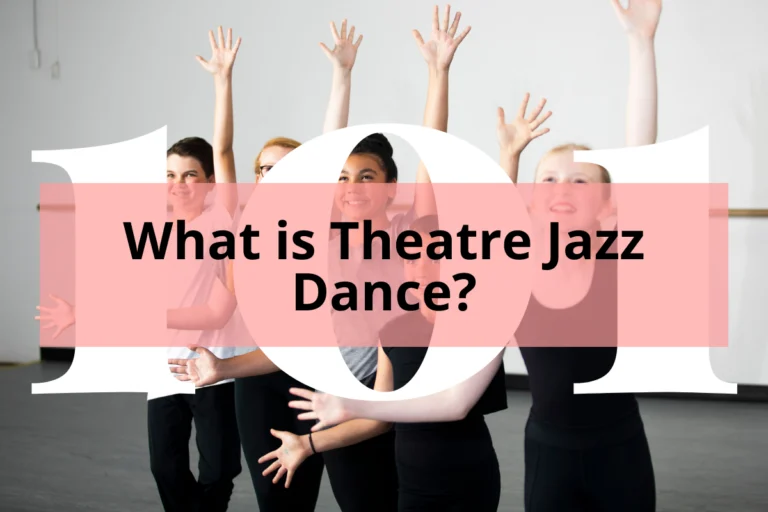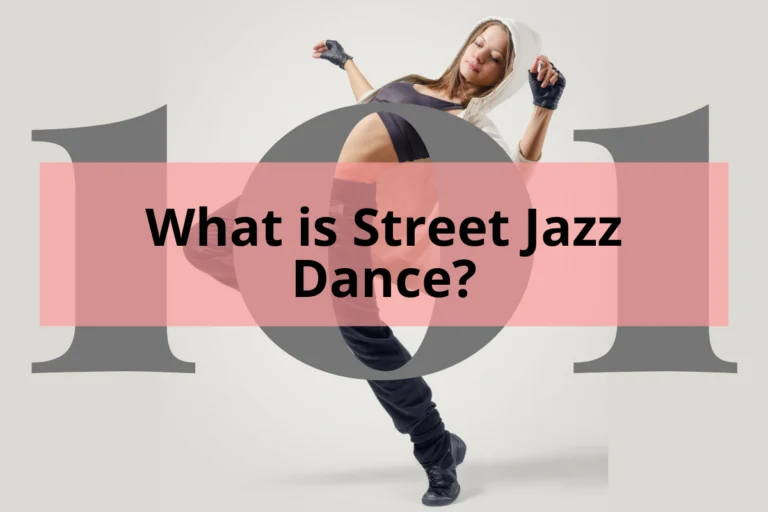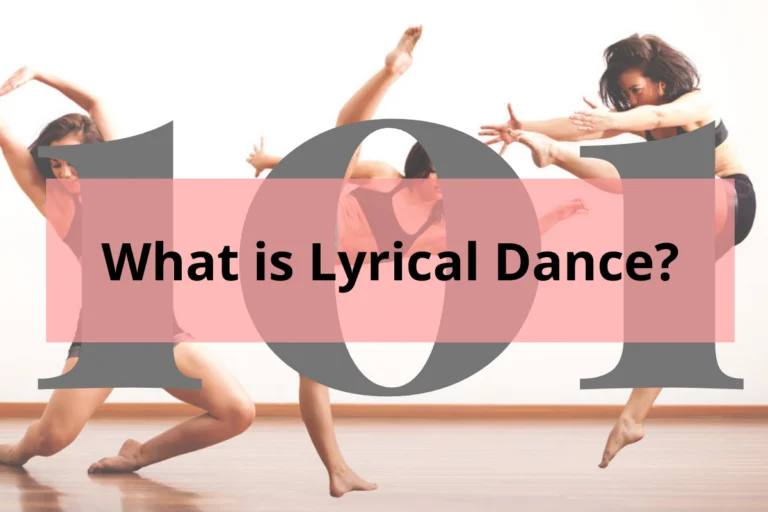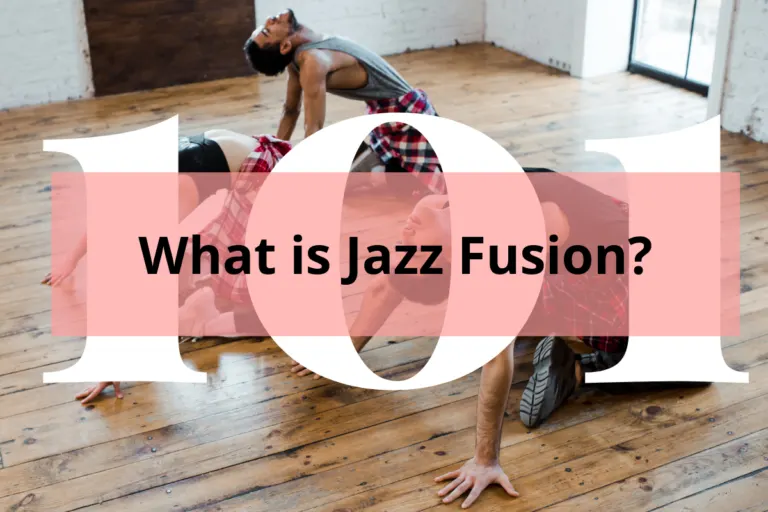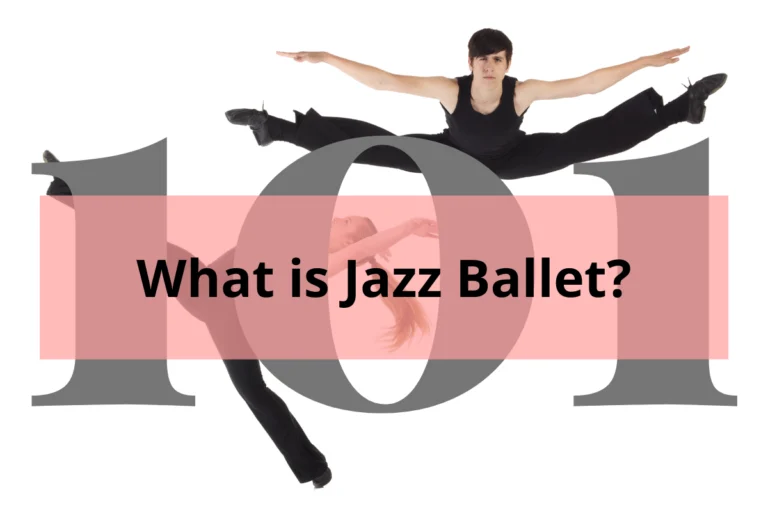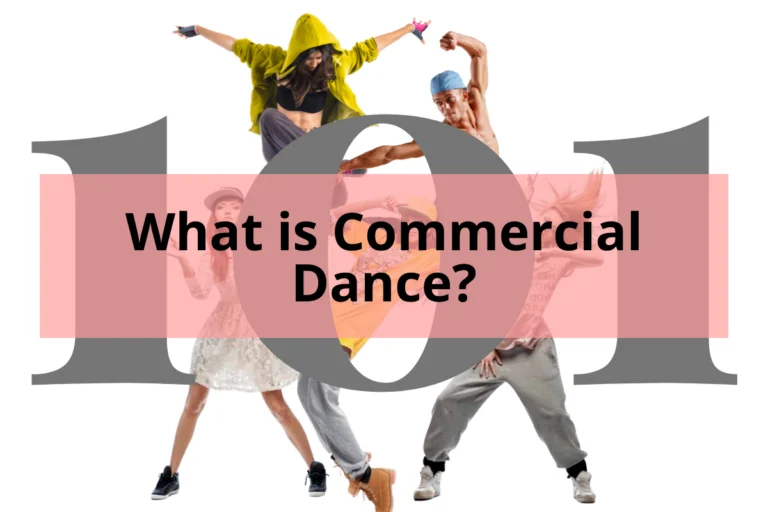By Danielle Pierce-Master, MA Dance / Edited by Samantha Bellerose, B.Ed, Dip.Dance(Performing Arts)
Jazz Dance is energetic. Jazz Dance is rhythmic. Jazz Dance is dynamic and ever changing. For some, “Jazz Dance” conjures up images of black fishnets, splayed fingers, and sultry hip isolations. For others, cut neck sweatshirts, legwarmers, and jazzercise. For still more, the Charleston and Lindy Hop of the Swing Era. The history of jazz dance is as interesting as the varying fusions that have developed from the style over time.
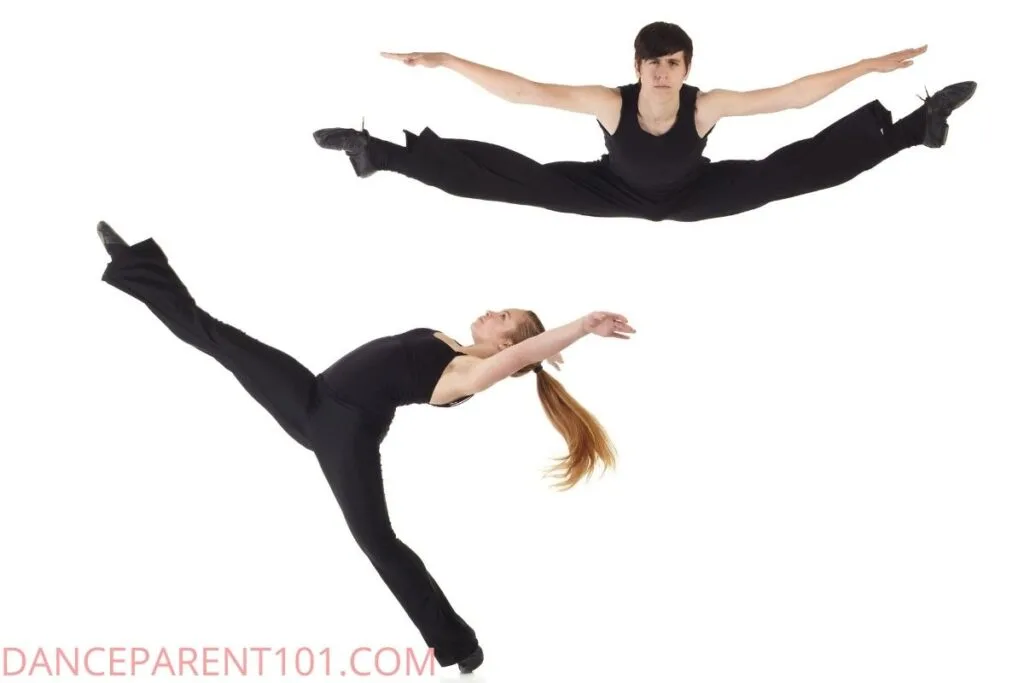
Jazz Dance is and can be identified by movements such as moving from a parallel position of the feet, dynamic jumps, isolations of the ribcage, body rolls, high kicks, fan kicks, strong and sharp arms, and head movements, and of course those spirit fingers.
However, it should be noted that Jazz Dance as we know it today has always been closely linked to the music of the time and tightly intertwined with the social and cultural context. There have been a myriad of modifiers added, “Latin Jazz,” “Authentic Jazz,” “Vernacular Jazz,” “Theatrical Jazz,” “Lyrical Jazz,” and a singular definition of Jazz remains elusive.
In Jazz Dance: Roots and Branches, Kimberly Testa’s “Jazz Dance Tree” offers the representation of the ways that Jazz Dance has grown since its early days, highlighting an important fact that is often forgotten: Jazz Dance comes from the traditions that were brought to the United States by enslaved Africans. Despite the twenty-first century’s associations of Jazz with glitter and sequins, the history of Jazz is complicated and often quite ugly. Broadway Choreographer Camille A. Brown’s TED Talk offers a view of the social dance steps that have emerged throughout the decades.
Please note that some links in this article are affiliate links. This means that Dance Parent 101 receives a small commission if you choose to purchase an item at no extra cost to you.
- African Roots
- Pre 1900
- The Ragtime Era
- The Jazz Age- The Roaring 20’s
- 1930’s & 1940’s – The Swing Era
- World War II
- 1950’s
- 1960’s
- The Disco Era- the 1970’s
- The 1980s
- The 1990s
- The 2000s-2020s
- Going Forward….
- For Further Reading
- Books About Jazz for Kids
- More Articles about Jazz Dance on the Dance Parent 101 Website:
Read on to learn more about the times, people, and places that are important in Jazz Dance history.
African Roots
Africa is a large continent with over fifty countries and thousands of different cultural tribes. Each tribe has its own sets of dances for both everyday enjoyment and important rituals.
Throughout the continent, dance and music are an interconnected, important part of life. The traditions of a variety of cultural groups, mostly from Western Africa, are at the core of what is currently referred to as Jazz Dance.
Pre 1900
Africans were forced to come to the US as Slaves as early as 1526, though there is evidence that people of African Descent had been in the west earlier. The people who were enslaved were from a variety of cultural groups, and their rhythmic and movement traditions intermingled on plantations.
From 1724 to 1817, Congo Square in New Orleans was a place where people of African, French and Spanish descent were able to socialize, and this is where what we now know as Jazz music and dance both began to take shape.
The Ragtime Era
While Ragtime and Blues music became popular, this was also the time that George Gershwin and Irving Berlin were working in Tin Pan Alley and Broadway theaters were starting to develop.
The 1890s-19 teens were times when Vaudeville and Burlesque shows were popular, with “animal dances” (such as the “grizzly bear” or “turkey trot”) popular at Jook Joints and Honky Tonks. As people moved north during the industrial migrations of this time, dances that were popular in the south traveled with them.
The Jazz Age- The Roaring 20’s
This is the period of time that gives us what is currently referred to as “classic” vernacular or “authentic” jazz dance. Jazz Music traveled from New Orleans up the Mississippi River towards Chicago and subsequently to the coasts.
While Prohibition had made Alcohol illegal in the US (causing speakeasies and an underground liquor culture), cities were growing, recorded music grew in popularity, and the Harlem Renaissance was taking place.
In 1921, Shuffle Along debuted on Broadway, the first musical to portray Black people as realistic humans and not as caricatures; in 1923 the musical Runnin Wild made its Broadway Debut and introduced the Charleston dance as it is known today.
1930’s & 1940’s – The Swing Era
The 1930’s and early 40’s were a busy time for dance, despite the backdrop of the times being the Great Depression. It was also the big band era, with musicians like Benny Goodman, Glenn Miller, Duke Ellington, Count Basie, Chick Webb and Louis Armstrong playing ballrooms and recording music. Ballrooms were popular places for people to dance, and the Lindy Hop and the Jitterbug were created there.
In the concert dance world, Martha Graham, The New Dance Group, Katherine Dunham and Pearl Primus were all working at this time, while George Balanchine brought ballet to the Broadway stage and Fred Astaire and Busby Berkely were working in films.
World War II
Because of the war, ballroom attendance decreased, though troops were entertained by big bands and jazz singers. After the war, the popular music was bebop, which has a complicated structure that doesn’t really work for social dancing.
It was at this time that Balanchine, de Mille and Robbins were working on Broadway, while Jack Cole was choreographing for nightclubs and the Nicholas Brothers were appearing at nightclubs and on film.
Jazz dance as a “technique” was starting to from around this time as well, this is typically referred to as “Theatrical Jazz,” as the Africanist movements are very much influenced by ballet.
1950’s
Amidst the cold war, “Cool Jazz” from artists like Miles Davis and Rhythm and Blues from artists like Ray Charles were the musical flavors of Jazz. This was the period that gave us Robbins’ West Side Story, which employs both theatrical and vernacular jazz, as well as The Pajama Game, with Fosse’s iconic “Steam Heat” number.
On Television, American Bandstand began in 1952, with Dick Clark hosting and kids dancing to the latest music, for a mostly white audience. By 1957 Bandstand went national and was in 4 million homes. Clark’s “wholesome” image made African American dance moves (which were passed off as the invention of whites) “safe” for white people.
In Studios, Matt Mattox and Luigi began teaching their codified Jazz techniques around this period.
1960’s
Though Dick Clark called it “Too Sexy for Mainstream,” Chubby Checker performed “The Twist” on American Bandstand on August 6, 1960, setting off a national dance craze. As the Rock and Roll dance scene evolved out of African-American movement, Elvis Presley’s use of isolations led to Americans eventually accepting hip gyrations on the dance floor.
Politically turbulent with the assassinations of JFK, his brother RFK, Martin Luther King, Jr., and Malcom X, the Vietnam War, and the Civil Rights Movement, this was also the time of Beatlemania and Woodstock.
The Judson Church Dance Theater “democratized” dance, believing anyone is a dancer and anything is a dance. Choreographers working on Film and Broadway at this time included Peter Gennaro, and Donald McKayle.
The Disco Era- the 1970’s
Disco emerged in black, gay, and Latin underground clubs, using record playing rather than live musicians. DJs mixed music mechanically, overlaying beats and seguing one song into the next. “Strangely Rhythmless,” The Hustle was “Inescapable and inevitable,” a partner dance that drew from the lindy hop and latin forms.
Disco broke down class and race barriers, with its divas like Donna Summer, Gloria Gaynor and Patti Labelle. At the same time, Rock and Roll was still popular and the biggest rule was that the music was danceable.
On Broadway, this period included Fosse’s Sweet Charity and Chicago, as well as Bennet’s A Chorus Line. The most iconic dance film of this era is Saturday Night Fever, which premiered in 1977.
The late 70’s also saw the beginnings of Breakdancing, which at the time was upright and fast.
The 1980s
Breakdancing continued to grow in the South Bronx, as a way to diffuse gang fights. It soon became a national dance craze. Stepping also became popular at this time, though it had begun in the 1920’s.
Popular Jazz teachers in the 1980s included JoJo Smith, Maurice Hines, and Frank Hatchett. Hines and Hatchett’s studio became Broadway Dance Center in 1984.
At this time on the concert stage, Twyla Tharp explored using pop and jazz music and Lou Conte founded Hubbard Street Dance Chicago.
On Broadway, Cats debuted in 1980; love it or hate it, no one can deny those kitties dance their tails off.
Dance on film included 1980’s Fame (I WISHED my high school graduation could be like that finale! – the video below is a snippet from the television series of the same name!), 1983’s Flashdance and Kevin Bacon’s moves in 1984’s Footloose.
EDITORS ADDITION: As a dancer in Australia, it is extremely evident to me how the music video was one of the most popular ways that the moves and fusions of jazz dance were transcended from the US to the world and so I felt that although the academics and history books may not include them music videos and their influence on jazz dance are important to include.
The music video also became very popular in the 1980’s and jazz dance was fused with other forms to create dynamic and entertaining iconic choreography. Most notably was the work created by Michael Jackson and choreographers such as Michael Peters who worked with him throughout his career. (Dance sequence begins at 3:58 in the following video.)
END EDITORS NOTE:
The 1990s
It was in the late 1980s and early 1990s that Dance Competitions became a popular way for dance studios to give their students performing opportunities. Competitions were (and are) often accompanied by conventions, where popular teachers at this time included Joe Tremaine, Rhee Gold, and Cathy Roe.
This led to the phenomenon known as “lyrical jazz,” a form that continues to evade definition, though, in a 1998 Journal of Dance Education Article, Leslie D. Netting tried: “Lyrical jazz dance refers to the unique style of jazz dance that expresses emotional sentiment through the use of the balletic line (not ballet steps) as a counterbalance to the percussive features of conventional jazz dance. Its rhythmic movements use the entire body, extending the body line and avoiding sharp, stationary, angular movements.”
The following video is of an unnamed dance studio performing a lyrical dance for their 1993 Recital choreographed by Debbie Labeaune. It is a great example of the lyrical style at the time.
This period of time also brought about the growth of hip hop, both as a social dance form and on the concert stage, with work from choreographers like Rennie Harris and Doug Elkins.
Highlights on Broadway include Susan Stroman’s Choreography for Crazy for You, Garth Fagan’s choreography for The Lion King, and Fosse, a retrospective of the choreographer’s work choreographed by Ann Reinking and Chet Walker.
The 2000s-2020s
When there were no Y2K bugs and the world kept spinning into the new millennium, so did jazz. Musically and culturally, the line between hip hop and pop continues to blur and dance styles continue to adapt. There is a renewed desire to preserve the classics as well as to innovate.
On film, the new century started with Center Stage (2000), Save the Last Dance (2001) and Step Up (2006 with multiple sequels), while 2007 brought a new film version of Hairspray, 2009 a remake of Fame, and 2011 Footloose. As they say, “Everything Old is New Again.”
Dance became popular on TV in 2005 with So You Think You Can Dance and Dancing with the Stars premiering that summer. SYTYCD brought about “contemporary” and the stardom of choreographer Mia Michaels.
EDITORS NOTE: The following three paragraphs have been added by the editor who with daughters currently in dance lessons can see the influence competitive dance has and is having on what has been known as jazz dance in dance studios and schools and thus is important for parents to know about and understand.
Another popular tv show premiering in 2011 and running for 8 seasons was ‘Dance Moms’ where styles such as jazz were placed under the spotlight at dance competitions.
Although ‘Dance Moms’ and Abby Lee didn’t start this trend – competitive dancers have always pushed the boundaries or rules in order to get that edge over their competitors to win – it certainly has helped push the concept of a jazz routine at a dance competition having to include multiple pirouettes, shows of flexibility and of course at least one acrobatic trick – and I think this is important to say – because this is the jazz many students are signing up to at their dance schools as the line between lyrical jazz, acro dance and jazz can be blurred for the sake of winning.
But just as we see studios around the world hosting fusion classes – lyrical jazz, street jazz, latin jazz, theatre jazz, acro dance – perhaps this too will become just another fusion – competition jazz?
END EDITORS NOTE
However, throughout the last 20 years, there has not been a single dominating aesthetic on Broadway, but a wide range of theatrical choreography.
From Susan Stroman’s work on Contact and The Producers to Twyla Tharp’s on Movin’ Out, what theatrical jazz is continues to change.
Some additional choreographers working in this period have included Randy Skinner, Sergio Trujillo, Jerry Mitchell, Bill T. Jones. 2015 brought a Broadway sensation in Hamilton, choreographed by Andy Blankenbuelher, using a fusion of contemporary and hip hop styles to tell the story.
My husband commented after Hamilton, “There wasn’t a lot of dancing,” to which I replied, “Oh there was SO much dancing.” The dancing is a part of an overall visual design and seamlessly integrated into the storytelling, rather than a presentational show stopping choreography in the traditional sense.
Going Forward….
As the world is still reeling from the global pandemic, it will be very interesting to see how jazz dance responds. Dance on film and in the theater continue to borrow from diverse influences and will adapt to tell the stories of our age.
For Further Reading
People spend entire careers researching Jazz and its history, so this post has just scratched the surface.
Check out these resources to learn more:
Jazz Dance: Roots and Branches Edited by Lindsay Guarino and Wendy Oliver
Uprooted: A Film tracing the history of Jazz Dance
Frank Hatchett’s Jazz Dance
Waltzing in the Dark by Brenda Dixon Gottschild
Books About Jazz for Kids
There is also a huge collection of books about jazz for kids which you can review and read about here!

